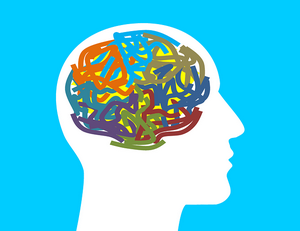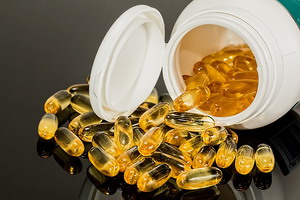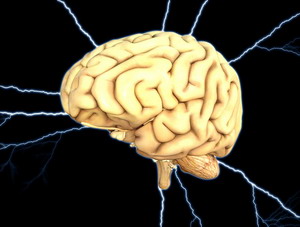I just spent the last Saturday and Sunday at a seminar on Brain Trauma. Although the focus was on such things as concussion, whiplash, and stroke, they also spent a lot of time looking at Alzheimer’s and other brain degeneration problems. This was because the basic biology for all of these issues is the same. We were focused on the cellular mechanisms of brain inflammation and what we can do about it.
This is a very deep subject and the research on it is mostly very new. The lecturer has a couple dozen books he brought along to show us where we can get the backup information about the info he was giving us, plus we got a thumb drive with all his notes with copies of the hundred or so journal abstracts he was quoting from. Most interesting is that all these different sources are coming up with the same information, just from different angles.

The biggest reveal is that how susceptible you are to brain damage from trauma is primarily due to your brain’s nutritional status. The biggest factors are vitamin D, magnesium, omega 3 fats, and the level of excitotoxins in the brain – specifically glutamate and aspartate. There are a slew of secondary factors we covered, but the ones mentioned are the biggies. Vitamin D levels must be up to a minimum of 40ng/dl and preferably over 70ng/dl. Magnesium levels in your red blood cells must be more than 6 mg/dl, and your ratio of omega 3 oil to omega 6 oil should be no higher than 1 to 3. If you don’t have these numbers going for you, your brain is right now degenerating faster than it should and you are a walking time bomb waiting for an accident to happen. Any head trauma and you are toast.
This is no joke. I had a patient who received a concussion after her dog ran into her head. The brain repercussions from that single trauma have disabled her. Post concussion syndrome symptoms can be devastating. Yet when you have all your ducks in a row, such a trauma takes about 10 days to recover from symptom wise. However the physiology in the brain is still vulnerable for about 3 months. A second head trauma during that time will put you out for 6+ months.
The seminar was a whirlwind of information, so lets see what else I can pull out. An interesting piece of information came from the trenches: doing brain recovery work fails if the patient does not get completely off all sources of MSG and aspartame. This is because these food enhancers ramp up levels of the excititory neurochemicals glutamate and aspartate. These drive the inflammation cycles in the brain. In fact the magnesium is used by the brain precisely to help block the effect of too much action by these chemicals.

Omega 6 oils from our diet – meaning all the vegetable seed oils like soy, corn, canola, sunflower, safflower, cottonseed, and so on drive a whole different inflammation cycle in the brain, while the omega 3 fish oils are what the brain actually uses to repair and build new brain tissue. Unfortunately for vegetarians, there are no dietary sources of usable omega 3 oils from plants. We can’t convert the plant type of omega 3’s, like in flax seed, into forms that our brain can use. We have to use fish oil. However, there is a new, very expensive algae source available. Quite a bit of time was spent on the consequences of not getting enough omega 3 oil in the diet – specifically violence. The higher your concentration of inflammatory omega 6 oils you have, the more violent you become to yourself or others. Anything over a 40 to 1 ratio is a serious red flag for trouble of suicide or going postal. The great news is that the average American currently runs an average ratio of 20 to 1. Why? Fried foods, packaged foods, margarine, and mayonnaise are the biggest culprits.
Another big focus of the seminar was on ATP production. ATP is the energy molecule that everything in the body runs on. We make it from glucose sugar and from triglyceride fats in the mitochondria of every cell. When we eat too many carbs, we become insulin resistant and our ability to form ATP goes down. Alzheimer’s is basically an energy shortage problem – the brain can not form enough ATP to keep itself healthy. This is why Alzheimer’s is being called diabetes type three or diabetes of the brain.

ATP is critical for recovery from brain trauma. Consequently a big focus for brain trauma is on the energy metabolism of the whole body. But a clever shortcut the presenter loved was the use of low level laser therapy because LLLT supports increased ATP production by stimulating one particular enzyme in the energy production pathway – cytochrome C. This can be very useful in the right doses for symptom support. However laser, like so many other biological processes, is hormetic. What does hormetic mean? Hormetic means that it is beneficial in small doses and worse for you in large doses. This is the Goldilocks zone concept that most biological things operate within. Think of something as simple as water. None at all or very little is bad, 4 to 8 glasses a day is good, a couple gallons a day is very bad. Laser is also like that, so treatment for only a couple minutes on specific brain regions increases ATP production, but more than that actually decreases production.
Another interesting section of the weekend was on the neurologic feedback loops from the neck vertebra to specific brain regions controlling sympathetic tone and blood flow. They showed PET scans and SPECT scans visualizing the big improvements in brain blood flow following Chiropractic adjustments. Blood flow is

also critical to the production of ATP for the energy to repair damaged brain tissue. That is the whole issue with a stroke – the loss of blood flow. The adjustment I do on your neck actually opens up blood flow to your brain.
Vitamin D was the fourth big area of the lecture because vitamin D is really the hormone that controls your immune system. Your immune system is what produces inflammation when it is needed to stop infections and bleeding, but when it is not properly controlled with enough vitamin D, things get crazy. The immune cells in the brain go into inflammation mode and start attacking the healthy brain cells thinking they are invading bacteria. This is what produces the post concussion syndrome. Like ripples in a pond, the primary injury site sends out waves of inflammation in the immune brain cells producing ever expanding circles of brain damage.

The big problem is that American’s have very low vitamin D levels. If you have dark skin, your ability to form vitamin D from sunlight is very low, so typical D levels in dark skinned people is often in the single digits to the teens – way below the amount needed for health. In fact it is now believed that this single issue may be the reason why dark skinned Americans have higher rates of cancer, heart disease, diabetes, and so on. The corrective doses of vitamin D for these cases and for brain trauma is 10,000 iu of D3 a day for 4 months then down to 5000 iu per day for maintenance. Getting your D is probably the cheapest health insurance you can buy. I am looking in to the blood spot testing for vitamin D they mentioned in the class.
So there you have the highlights. There was a ton more that I will be looking into how to incorporate into my practice, but here you have a taste of the new science of brain trauma.
